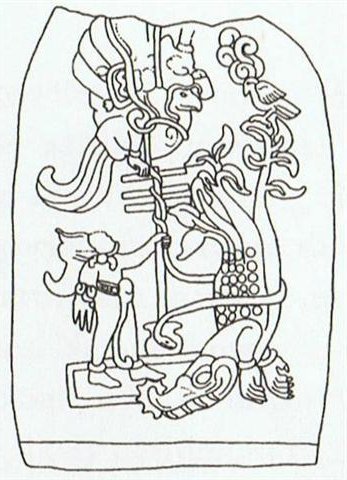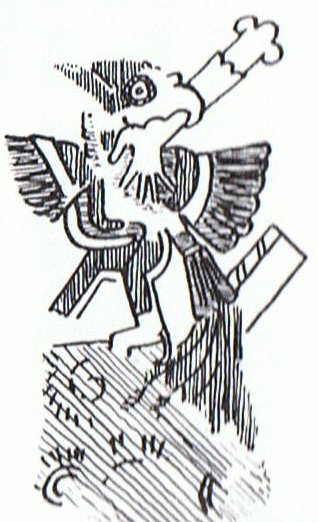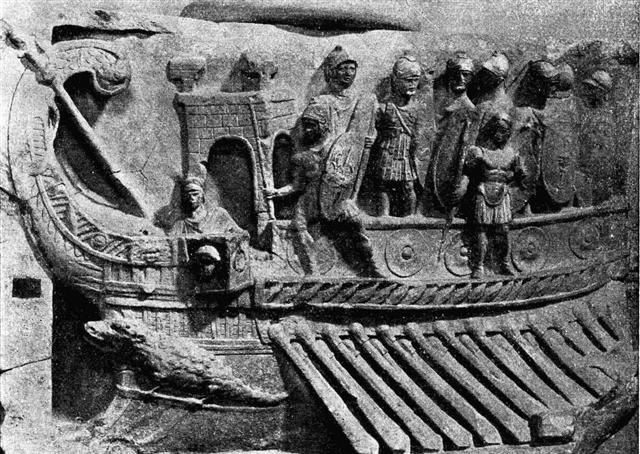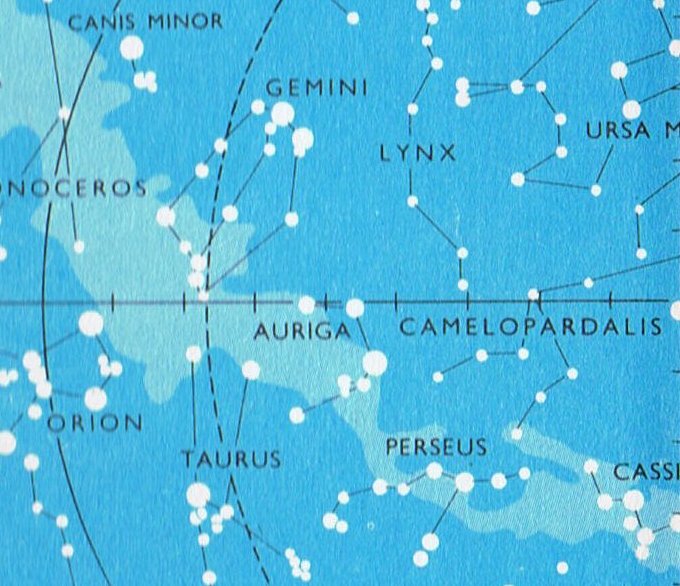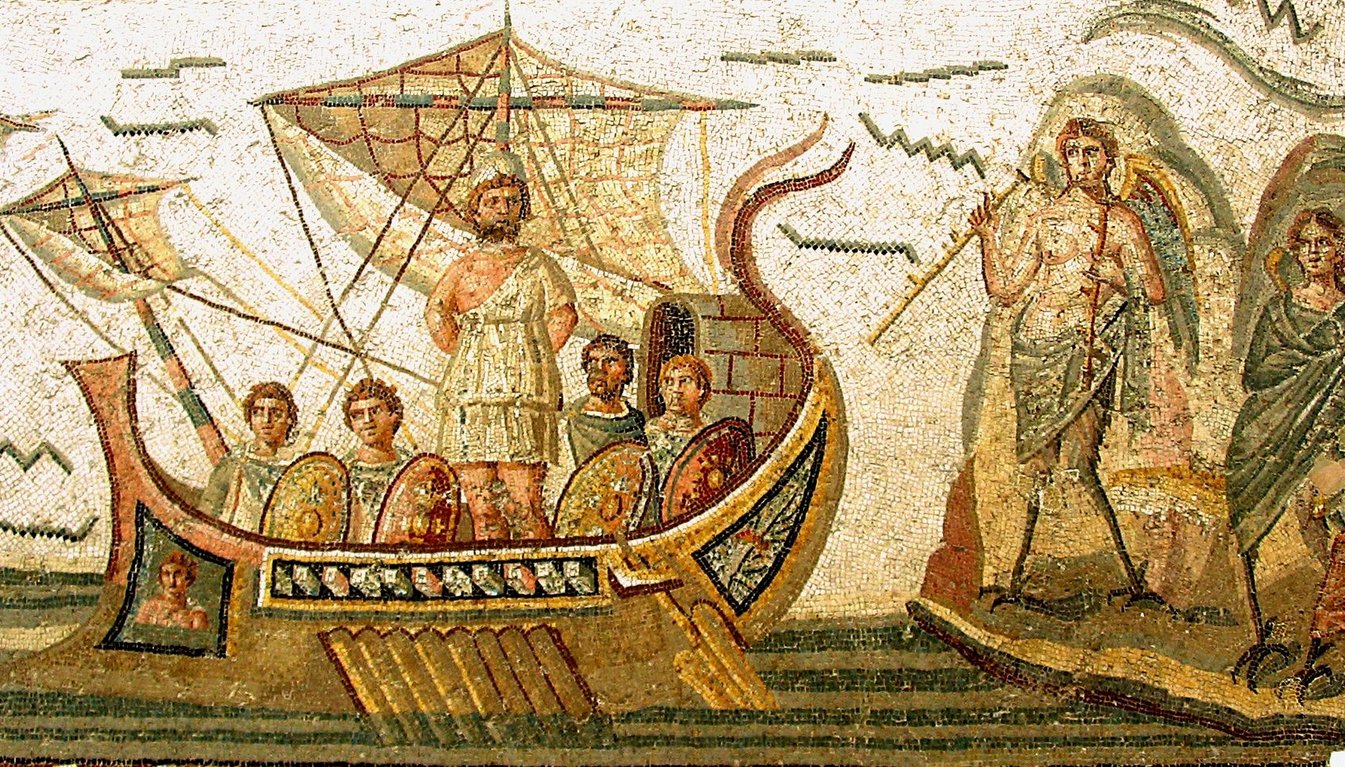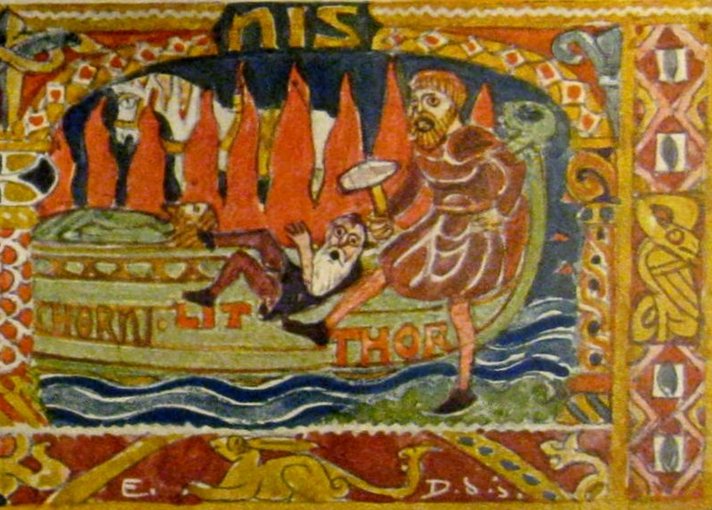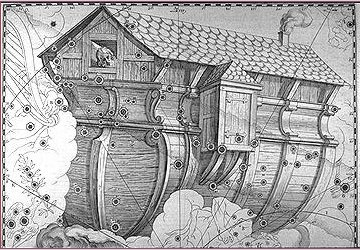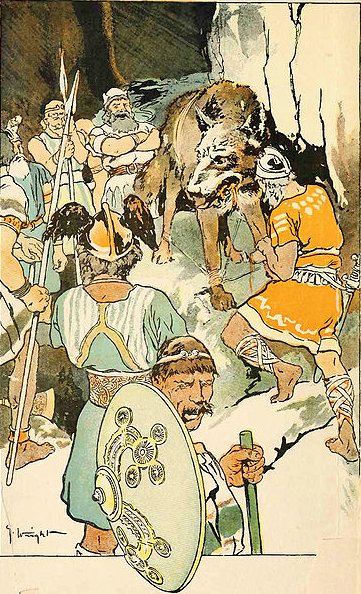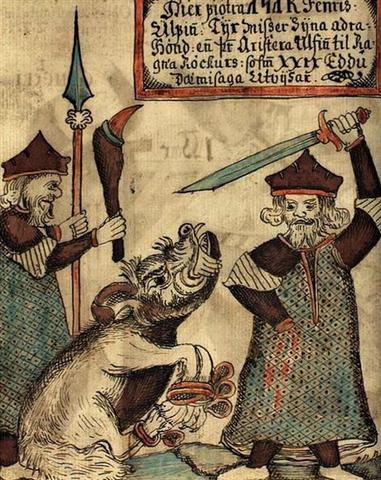At right in the picture below there is a crocodile is descending, probably meant to illustrate the place for the downwards path of the sweet water (serpent), and at the other side is his opposite - the source for the upwards force of heat evaporating and elevating the water and making it circulate:
The right forearm of this person - with his hair on fire - has evidently been rotated up to the bird at the top: ... This 'crocodile tree' is a very ancient image among the Maya and is featured in Popol Vuh version of Creation. In fact, a monument from the very early ceremonial center of Izapa in Chiapas shows this crocodile tree along with a picture of one of the Hero Twins after his arm has been ripped off in a struggle with Itzam-Yeh, the Classic name for Seven-Macaw. With his good arm he is holding a pole on which a Late Preclassic-period version of Itzam-Yeh perches ...
For the amphibious Crocodile we have evidence for instance in the Chinese association for Spica, the star just below the surface:
The Babylonian ecliptic stations in a way ended with Porrima and with Spica mentioned at the end only to indicate what eventually could happen later:
... Janus (as in January) was guarding the door on one side of the year and the Ship slipped through the door at the opposite side. Once upon a time the latter door must have been in spring, which means Janus once upon a time must have been in autumn. But Julius Caesar had inserted a pair of new months, which might have pushed the stars of January correspondingly ahead in the year - at would could have been the first Point of Aries, but what in earlier times may have been at the bridge across the Milky Way at Auriga:
And reasonably such a 'bridge across' could have been a ship:
For the Fire person who lost his forearm we could at first consider Castor, because of the name of the 5th Arabic station and for the bird inspecting his (intact) left forearm in glyph 49. But the Beaver (Castor) is an amphibian (like the Crocodile and the Hippopotamus) and furthermore he has the habit of felling trees (from where firewood ultimately was originating) - which rather suggests a connection with Itzam-Yeh. He was the Western One of the Twins:
And the Eastern One of the Twins (Pollux as if indicating a change from darkness to light - lux) has his right forearm embedded in a rising fish of the watery kind as if he was lifting it up:
But there is other firm evidence in form of Mars (alias Tyr as in Tuesday) loosing his right hand:
As another piece in this part of the puzzle we can then use the 18th and last constellation in a Babylonian list:
Kuukuu (Mars) was commanded by Ira (Sun) to be 'the agrarian worker', to become (like) Aries.
Aries, in turn, was personified by Hamal - the Leader: ... Strassmeier and Epping, in their Astronomishes aus Babylon, say that there its stars formed the third of the twenty-eight ecliptic constellations, - Arku-sha-rishu-ku, literally the Back of the Head of Ku, - which had been established along that great circle milleniums before our era; and Lenormant quotes, as an individual title from cuneiform inscriptions, Dil-kar, the Proclaimer of Dawn, that Jensen reads As-kar, and others Dil-gan, the Messenger of Light. George Smith inferred from the tablets that it might be the Star of the Flocks; while other Euphratean names have been Lu-lim, or Lu-nit, the Ram's Eye; and Si-mal or Si-mul, the Horn star, which came down even to late astrology as the Ram's Horn. It also was Anuv, and had its constellation's titles I-ku and I-ku-u, - by abbreviation Ku, - the Prince, or the Leading One, the Ram that led the heavenly flock, some of íts titles at a different date being applied to Capella of Auriga. Brown associates it with Aloros, the first of the ten mythical kings of Akkad anterior to the Deluge, the duration of whose reigns proportionately coincided with the distances apart of the ten chief ecliptic stars beginning with Hamal, and he deduces from this kingly title the Assyrian Ailuv, and hence the Hebrew Ayil; the other stars corresponding to the other mythical kings being Alcyone, Aldebaran, Pollux, Regulus, Spica, Antares, Algenib, Deneb Algedi, and Scheat ... The Agrarian Worker was the last constellation in this list and then the cycle would begin anew with the Pleiades. Therefore Kuukuu had to be put out of action and therefore it was in order to raise 6 stone heaps outside his cave: ... Everytime Kuukuu asked, 'Where are you, friends?' they immediately replied in one voice, 'Here we are!' They all sat down and thought. They had an idea and Ira spoke, 'Hey, you! Bring the round stones (from the shore) and pile them into six heaps of stones!' One of the youths said to Ira, 'Why do we want heaps of stone?' Ira replied, 'So that we can all ask the stones to do something.' They took (the material) for the stone heaps (pipi horeko) and piled up six heaps of stone at the outer edge of the cave. Then they all said to the stone heaps, 'Whenever he calls, whenever he calls for us, let your voices rush (to him) instead of the six (of us) (i.e., the six stone heaps are supposed to be substitutes for the youths). They all drew back to profit (from the deception) (? ki honui) and listened. A short while later, Kuukuu called. As soon as he had asked, 'Where are you?' the voices of the stone heaps replied, 'Here we are!' All (the youths) said, 'Hey, you! That was well done!' ...
Minelauva (δ) is located where the right forearm of the Virgin is beginning.
|
||||||||||||||||||||||||||||||||||||||||||||||||||||||||||||||||||||||||||||||||||||||||||||||||||||||||||||||||||||||||||||||||||||||||||||||||||||||||||||||||||||||||||||||||||||||||||||||||||||||||||||||||||||||||||||||||||||||||||||||||||||||||||||||||||||||||||||||||||||||||||||||||||||||||||||||||||||||||||||||||||||||||||||||||||||||||||||||||||||||||||||||||||||||||||||||||||||
